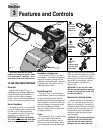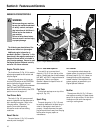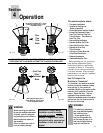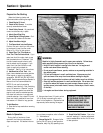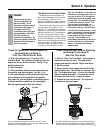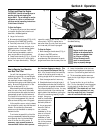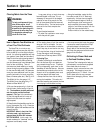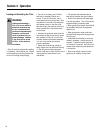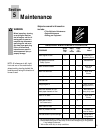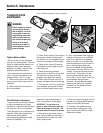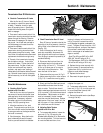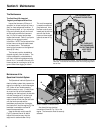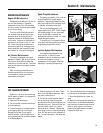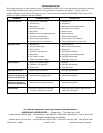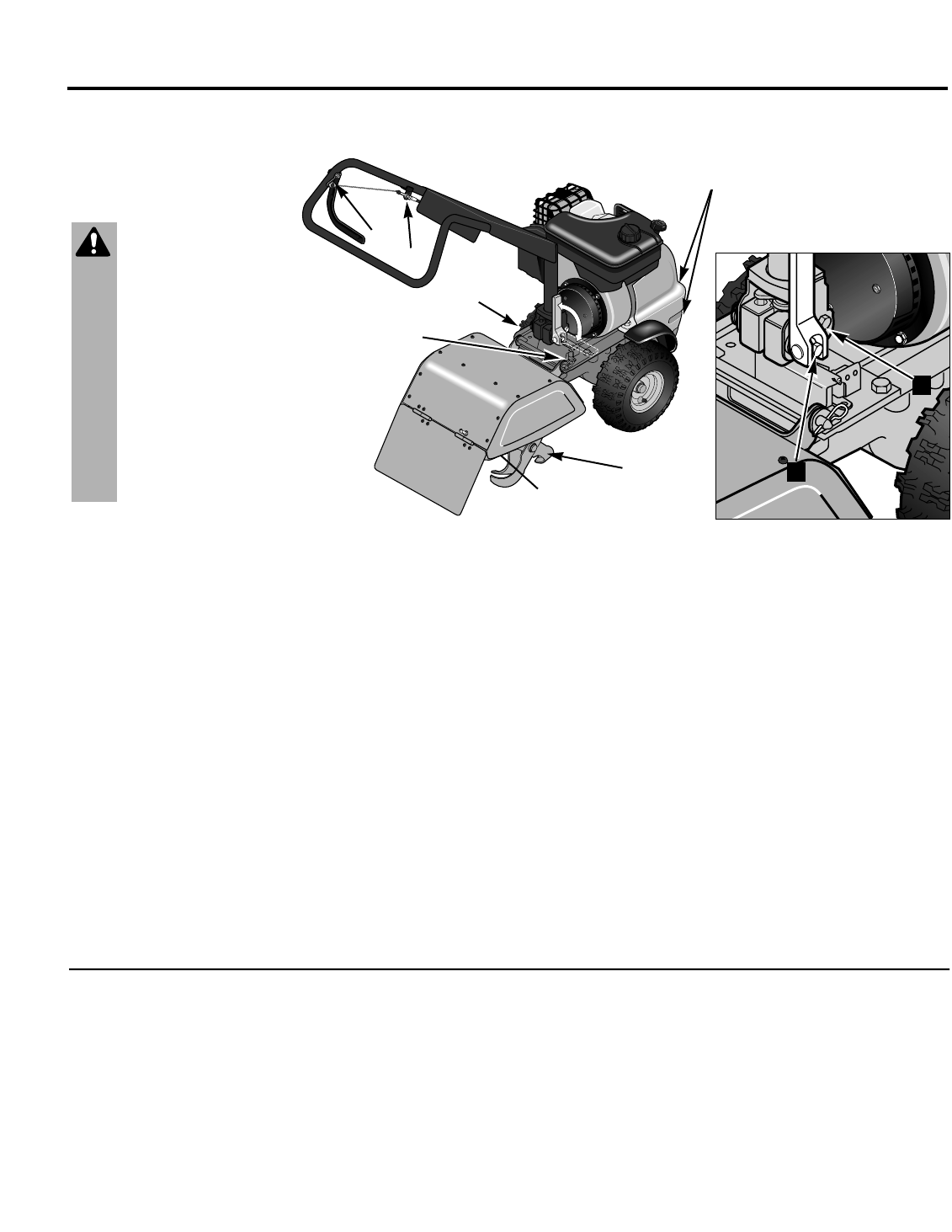
20
TILLER/CULTIVATOR
MAINTENANCE
Tighten Bolts and Nuts
Check for loose or missing hardware
every ten (10) operating hours. Failure to
tighten or replace missing fasteners can
cause poor performance, equipment
damage or oil leakage. See your Parts
Catalog for fastener descriptions.
Most hardware on your equipment is
visible. Pay particular attention to the
hardware shown in Fig. 5-1 at right.
1. Check the mounting screws (A) secur-
ing the protective high-impact cover on
the engine.
2. Check hardware (B) securing Drive
Bail to the handlebar.
3. Check the two screws (C) securing the
bearing cap to the end of the transmis-
sion housing. Do not overtighten them or
the aluminum threads could be stripped.
4. Check the four screws (D) securing
the handlebar mounting plate to the two
chassis side rails.
5. Check the mounting hardware
securing the tine sets (E) to the tine shaft.
The locknuts do not need to be over-
tightened. Just tighten them securely.
6. Check that the interlock switch (F) is
securely connected to the interlock housing.
7. The cable jam nuts (G) on the left side
of the handlebar securing the Drive Bail
cable to the cable bracket must be tight.
8. Also, if the handlebar feels loose (the
handlebar locking lever must be DOWN)
when force is exerted on the handlebar
either up and down or from side to side,
check the tightness of the two screws (H
and I in the Inset Figure above) that
secure the handlebar and the handlebar
locking lever to the base. Over time, the
“seating” of parts can cause some loose-
ness to occur. Tighten both nuts that
secure the screws approximately one-
sixth (1/6th) of a turn. Check to see if the
loose handlebar feeling has been
eliminated. Alternate between modest
tightening and checking for handlebar
looseness until the handlebars feel as
secure as when new.
Section 5: Maintenance
WARNING
Before inspecting, cleaning
or servicing the machine,
shut off engine, wait for all
moving parts to come to a
complete stop, disconnect
spark plug wire and move
wire away from spark plug.
Failure to follow these
instructions can result in
serious personal injury or
property damage.
Fig. 5-1: Hardware locations to check for tightness.
Tiller/Cultivator Lubrication
Proper lubrication of the tiller’s mechani-
cal parts is an essential part of good
maintenance. Lubrication should be done
after every ten (10) hours of operation.
Use #30 weight motor oil wherever oil is
specified. Use a quality grease with a
metal lubricant where grease is
recommended (grease without a metal
lubricant is acceptable). The
transmission requires special gear oil
which is described on the next page.
IMPORTANT– Do not allow oil or
grease, or other lubricant to come into
contact with pulleys or drive belt. This
can cause the belt to slip on the pulleys.
1. After removing the wheels (one at a
time), lightly lubricate the wheel shaft on
the areas which the wheels ride. Use a
quality metal lubricant.
2. After removing the tine gangs from the
tine shaft, very lightly grease all exposed
areas of the tine shaft (both ends).
3. The base of the handlebar locking
lever has several rotating parts. Use a
spray lubricant such as WD-40 to keep
these parts lubricated.
A
B
C
D
E
F
G
H
I



